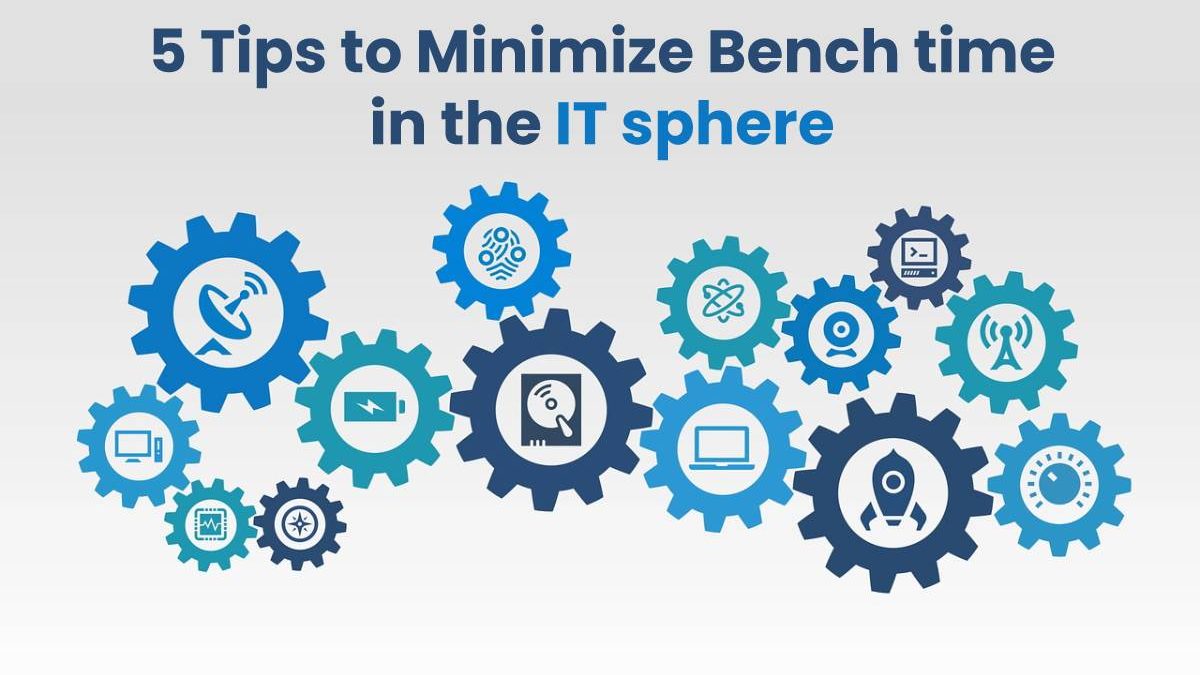Minimize Bench time in the IT sphere
Once considered to be a strength of the Information Technology industry, bench-time is now costing organizations their business reputation. It’s a status for employees who are not working on any billable project but are nonetheless a part of the enterprise. This incurs a lot of expense to the company with no ROI as they are not generating any revenue for the organization. What’s more? It stunts employee’s professional growth and lowers their morale. To increase profitability and employee engagement, minimizing bench-time is the need of the hour.
Let’s have a look at ways to resolve this issue:
Table of Contents
#1. Visibility
Every project demands a specific skill set and a defined tenure. To meet these demands, the manager has to ensure he is assigning the right task to the right person based on his,or her competencies. However, filtering resources across an enterprise is not easy if the schedule can’t be seen on a centralized platform. Hence a 360-degree visibility is necessary for a manager to allocate tasks.
Leveraging this using sophisticated resource management tools will enable project managers to ensure that none of the resources are left unassigned as it helps you understand their availability down the line. This reduces their bench-time because they will have another task scheduled before finishing the previous one. Not only that, the visibility can also tell you the status of probable projects and their likelihood of being awarded the project. So schedules can be sorted out accordingly. Also, benched inexperienced /freshers can be trained ahead of time to be ready to take on the work.
#2. Forecasting
In order to stay ahead of time and keep themselves ready with prerequisites, project managers streamline pipeline projects to ensure everything is in place. Effective pipelining also lets them book the resources in advance. This facilitates employees to prepare themselves and upskill them if required to meet the project’s needs. Besides, what’s more satisfying than not having to stay on-bench!
Using smart technologies like Artificial Intelligence and analytics, sophisticated tools have been developed that smoothens the process of forecasting and forewarns managers about excess or shortage of resources. Rather than take a reactive stance to bottlenecks, the point of staying forewarned is to act fast to save projects, and reduce potential idling away. Furthermore, it increases employee engagement by keeping them informed of their schedules, bringing the bench-time down.
#3. Optimal allocation
When you are managing an enterprise, it’s not easy to ensure uniform distribution of tasks. However, advancements in software let you level resources to speed up work that is halted due to a crunch. It ensures equal ownership of work and prevents spreading your pool too thinly.Allocating tasks on the basis of their roles and competencies, a manager makes sure everyone has a task to complete.
With optimal allocation, employees are tapped into their full potential which in turn increases their productivity. If pipelined effectively, managers can reassign a placeholder booking to an actual employee who is on-bench to leverage his skills. This helps him grow professionally and also saves company from incurring losses.
#4. Proactive hiring
While hiring new candidates, HRs need to make sure that the skill set aligns with the company’s requirements. Additionally, a recessive economy can create work seasonality, forcing you to push back on hires. Using automation and HR analytics, the screening process has become an absolute breeze. Only when you know the organization has hired resources according to your project needs, can you book them for tasks that they are suitable for. Otherwise, they will end up serving bench-time incurring extra costs to the company.
Moreover, when you require certain skills only for a brief period, instead of hiring permanent employees, employers can hire contractors or freelancers. This will preserve your business in future and also provide you candidates with better experience in niche skills.
#5. Introduce training programs
What do you do when you face a gap of a month after completing your first project? Obviously, sending your resources back home is not a solution. Instead, a thorough gap analysis well in advance will help you bridge the gap with extensive training programs. You will keep the employees engaged with up-skilling to perform better in their current role or reskilling to take on a different profile, thus facilitating professional growth.
With these learning programs, they can avoid bench time in future. Hence, investing in these programs will save you from facing surplus loss when an employee is on-bench and will also save you from hiring new candidates for the same skills. A learning culture boosts employee productivity and increases profitability of your business.
The takeaway
Bench time can lead to poor financial performance, increased employee turnover and reflects a below average team culture. To avoid this from happening, it’s imperative to take stock of your pipeline to reach an exactness in the resource pool needed to drive it.
Not only are the chances of benching potential greatly reduced but profitability also soars. Increased engagement is apparent in the quality of work produced, which in turn draws more clients who see your work and are encouraged to pick you for a bigger contract.
Moreover, while reassigning work to benched employees, you can tap into their hidden potential and help them explore their secondary skill set. Use the tips discussed in this post to cut down on your bench-time and generate more revenue for your enterprise!
Author Bio:
Mahendra Gupta is a PMP certified business consultant and has been with Saviom Software for the past decade. His speciality lies in enabling portfolio profitability, with globally renowned consulting giants benefitting from his expertise on resource management, workforce planning and service-based efficiency.Follow his work here

